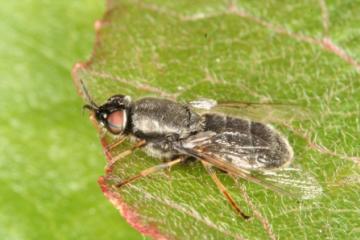Species Account for Odontomyia tigrina
Odontomyia tigrina (Fabricius, 1775)
Diptera: Larger Brachycera: Stratiomyidae

Reproduction for study and non-profit use permitted, all other rights reserved.
Taxonomic group: soldier flies and allies (Diptera: Larger Brachycera) - County data
View time series maps for Odontomyia tigrina
member log-on for taxon report
Essex RDB: Listed
Threat: Regionally Important
Images
upload a new image
Species text
This is a soldier fly whose larvae develop in shallow water in ponds and marshes amongst vegetable matter. The vast majority of records are for southern England where it is highly localised but regular in a number of fens, damp heaths and coastal levels in southern England. Falk (1991a) states that there are about 60 known post 1960 sites with particularly strong populations on the coastal marshes of Monmouthshire, Somerset and the Thames estuary and that it seems to prefer water bodies with a rich flora and where both emergent and floating vegetation is present; on the Gwent and Somerset Levels it was found to prefer the narrower ditches with much emergent vegetation and to be least frequent in the large drainage diches, in ditches that were especially choked with vegetation or where cleared in the previous year. Rotational pond/ditch management will be necessary to maintain a high, stable water level ensuring the presence of some standing water, retaining reasonable amounts of suitable ditch. References
Habitats
Recorded management for locations with Odontomyia tigrina
Recorded substrate and hydrology for locations with Odontomyia tigrina
Why not join the Club, register and add a new species page
Interpretation of distribution maps



















